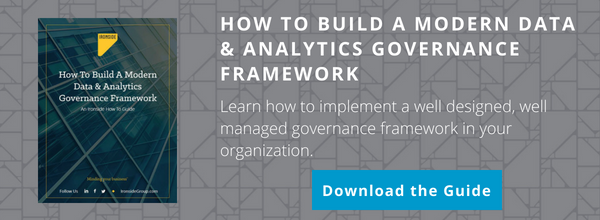Top 5 Trends in Cloud Data Warehousing and Analytics for 2015
In 2014, cloud data warehousing services led the information management category in increased adoption rate, jumping from 24% to 34% according to surveys by Information Week . For organizations challenged by data urgency needs that can be difficult to meet with traditional data warehouse infrastructures, cloud services offer an alternative that can provide value at the pace of business, often supplementing existing, on-premise data warehouses. With new technologies and advancements in the cloud data warehousing space, 2015 should prove to be an exciting year for those looking to build out or implement new cloud based DW programs. Whether you are in the midst of a cloud DW initiative, looking to start one soon, or just getting to know the technology – the five trends that we will discuss below are items you will want to keep in mind for the coming year.
Trend #1: Rapid Deployment of Large-Scale Cloud Data Warehouses
Given the urgency that today’s ever increasing data volumes and complexity levels present, organizations are searching for ways to keep the focus on their business rather than their IT infrastructure. Advances in cloud-based infrastructure and technology are leading companies to trust more of their critical functions to the cloud, including large scale cloud-based data marts and data warehouses. In fact, last year saw an increase in companies deploying large scale cloud data warehousing initiatives from 25% to 31%. Many of these environments were implemented to complement or replace existing solutions, and in other cases they were set up to enable a new analytics solution for companies without the on-premise infrastructure to support a data warehouse.
Trend #2: Increased Enablement of Self-Service Data Access via Cloud Data Integration Services
Even the most mature analytics organizations struggle with the gap between business analysts who need access to information that is not in existing systems and actually making that information accessible. Developers on the IT side work to create applications to house and maintain this data, but these solutions are often disparate and have no governance from or integration to a data warehouse or one another. On the other hand, IT governing bodies and data stewards put forth every effort to implement standards and governance that will make integrating different systems a less daunting task; however they are often unable to facilitate the rapid access to data that the business analysts require. New cloud-based data integration and data refinery technologies can allow organizations to close this gap by providing APIs to easily move data between cloud data stores.
Trend #3: Continued Growth of NoSQL Adoption
NoSQL databases showed a 7% increase in adoption in 2014, with reasons for increased interest ranging from faster and more flexible development to lower deployment costs. This trend is expected to continue in 2015, and with the advent of new cloud-based NoSQL databases that can scale to petabytes of data, the growth in this arena is anticipated to match that of cloud data warehousing. NoSQL databases not only offer a low-risk, low-cost solution for organizations looking to get started with cloud-based analytics but also provide one of the most efficient, scalable solutions for cloud data storage as well. Additionally, new types of NoSQL tools, such as graph databases for analyzing relationship networks and key-value pair databases for data stream analysis, are gaining popularity for specific analytic use cases.
Trend #4: Big Data Analytics in the Cloud
Big data represents a major focal point for many organizations in recent years. The challenge with big data analytics has always been bringing the data to the analytics tool. Since the advent of Hadoop, companies have been processing their largest data sets on clusters of physical machines. Now, with new technologies available for analyzing these data sets in the cloud, organizations are taking advantage of the increased scalability and lower overhead, and we are seeing a shift from physical machines to cloud-based big data solutions.
Trend #5: Cloud-Based Analytics and Data Discovery
Deploying cloud-based analytics and data discovery tools may be one of the simplest, most efficient ways for organizations to engage their users and provide self-service Business Intelligence capabilities to put the data in the hands of the business users who can get the most insight from it. Recent Aberdeen Group studies show that companies leveraging cloud-based analytics experienced an increase in user engagement from 35% to 52% and an increase in self-service BI usage from 42% to 65%. In addition, cloud-based tools lower BI deployment time by an average of three and a half months, resulting in faster time to insight. The value in BI and analytics is all about getting the right data to the right people at the right time, and cloud-based analytics and data discovery tools like IBM’s new Watson Analytics platform, which incorporates Cognitive Computing and Predictive Analytics into a visual data exploration solution, are quickly proving themselves to be the ticket to realizing this value.
In addition to Watson Analytics, IBM has some exciting new cloud technologies hitting the market in 2015. From DataWorks, the new cloud based data integration tool and data refinery, to data warehousing as a service with dashDB, to the cloud based NoSQL and Big Data analytics solution Cloudant, these new products are sure to keep data-savvy organizations moving forward and realizing added value from their data.
References:
1. Henschen, Doug. “5 Analytics, BI, Data Management Trends for 2015.” Information Week. January 9, 2015. Retrieved January 9, 2015 from http://www.informationweek.com/big-data/big-data-analytics/5-analytics-bi-data-management-trends-for-2015/a/d-id/1318551
2. Lock, Michael. “Rapid Insight with Results: Harnessing Analytics in the Cloud.”
Aberdeen. July 7, 3015. Aberdeen Group. Retrieved January 12, 2015 from http://www.aberdeen.com/research/9373/rr-rapid-cloud-analytics/content.aspx
3. Mitchell, Robert. “8 Trends in Big Data Analytics.” CIO. October 23, 2014. Retrieved January 26, 2015 from http://www.cio.com/article/2838172/data-analytics/8-big-trends-in-big-data-analytics.html






